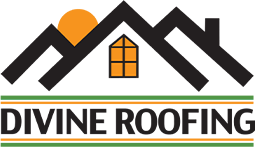Tip #1: Understand How Your Roof Works
While we all know that our roofs protect our homes from the elements, many people don’t know a lot about how they work. Your roof comprises several layers of different materials. While you can see some of your roof layers, like the shingles, other layers, such as the decking and membranes, are not visible. These layers work in concert to protect your home from wind, rain, snow, ice, and more.
The layers in your roof include:
- Decking
- Flashing
- Protective layers
- Sealants
- Shingles
- Underlay membrane
Often, a professional roof inspection is part of the home-buying process. So, you may already know the general condition of your roof. However, as a new homeowner, you should regularly look over your roof and get familiar with it. When you know what your roof should look like, you are better able to spot potential problems.
Click here to get to know the different parts of your roof.
Tip #2: Learn About Your Roof’s Materials
There are several different options when it comes to roofing materials and systems. To better maintain and preserve your existing roof, you should familiarize yourself with the type of materials it is made from and what you can expect regarding its performance and lifespan. This is especially important if you are a new homeowner and are generally unfamiliar with roofing. Information is your first line of defense when it comes to roof maintenance.
Common roofing materials include:
- Asphalt
- EPDM
- Metal
- Slate
- Tile
- TPO
The lifespan of roofing materials varies widely, as does the cost of installation. Asphalt shingles are perhaps the most common type of roofing material in the US and the most affordable. However, asphalt shingles only last for around 15 to 20 years. Meanwhile, slate and tile roofs are more expensive but can last for upwards of 100 years. Many Colorado homes have EPDM roofs (also known as rubber roofing) because of their increased durability and weather resistance. Meanwhile, TPO roofing is more commonly used in commercial settings.
Things to consider when selecting roofing materials include:
- The weather in your area
- The pitch of your roof
- The look of your home
- Your design preferences
- Your budget
To learn more about why roofing materials matter, click here.
Tip #3: Know When to Call a Professional for Help
There are a lot of things you can do as a homeowner to protect your roof. In addition to inspecting it regularly, you can also regularly remove leaves, branches, and other debris that falls on it. Relatedly, keeping your gutters cleared out so that they can flow freely goes a long way in protecting your roof. However, one of the best things you can do for your roof is knowing when to call in a professional roof repair technician, like ours at Divine Roofing, Inc.
Signs you need roof repair include:
- Discolored or damaged shingles
- Evidence of rodents, birds, and other pests roosting on your roof
- Leaks inside your home or water staining on your ceiling
- Missing shingles
- Signs of moss or other plant growth
- Sagging spots
- Torn flashing or other visible damage
- Water pooling
When you notice a problem with your roof, the sooner you call in a roof repair specialist, the less likely it is that the situation will escalate. You should also consider making annual roof inspections and routine, proactive roof maintenance part of your home maintenance routine. Working with a professional roofer can save you time and money and can help you preserve your roof for years to come.
Want to know more about commonly missed signs that you need roof repair? Read our blog on the topic here!

